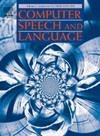A knowledge-Aware NLP-Driven conversational model to detect deceptive contents on social media posts
IF 3.4
3区 计算机科学
Q2 COMPUTER SCIENCE, ARTIFICIAL INTELLIGENCE
引用次数: 0
Abstract
The widespread dissemination of deceptive content on social media presents a substantial challenge to preserving authenticity and trust. The epidemic growth of false news is due to the greater use of social media to transmit news, rather than conventional mass media such as newspapers, magazines, radio, and television. Humans' incapacity to differentiate among true and false facts exposes fake news as a threat to logical truth, democracy, journalism, and government credibility. Using combination of advanced methodologies, Deep learning (DL) methods, and Natural Language Processing (NLP) approaches, researchers and technology developers attempt to make robust systems proficient in discerning the subtle nuances that betray deceptive intent. Analysing conversational linguistic patterns of misleading data, these techniques’ purpose to progress the resilience of social platforms against the spread of deceptive content, eventually contributing to an additional informed and trustworthy online platform. This paper proposed a Knowledge-Aware NLP-Driven AlBiruni Earth Radius Optimization Algorithm with Deep Learning Tool for Enhanced Deceptive Content Detection (BER-DLEDCD) algorithm on Social Media. The purpose of the BER-DLEDCD system is to identify and classify the existence of deceptive content utilizing NLP with optimal DL model. In the BER-DLEDCD technique, data pre-processing takes place to change the input data into compatible format. Furthermore, the BER-DLEDCD approach applies hybrid DL technique encompassing Convolutional Neural Network with Long Short-Term Memory (CNN-LSTM) methodology for deceptive content detection. Moreover, the BER approach has been deployed to boost hyperparameter choice of the CNN-LSTM technique which leads to enhanced detection performance. The simulation outcome of the BER-DLEDCD system has been examined employing benchmark database. The extensive outcomes stated the BER-DLEDCD system achieved excellent performance with the accuracy of 94 %, 94.83 % precision, 94.30 % F-score with other recent approaches.
检测社交媒体帖子中欺骗性内容的知识感知 NLP 会话模型
社交媒体上广泛传播的欺骗性内容对维护真实性和信任度构成了巨大挑战。虚假新闻的流行性增长是由于更多地使用社交媒体而不是报纸、杂志、广播和电视等传统大众媒体来传播新闻。人类无法区分真假事实,这暴露了假新闻对逻辑真理、民主、新闻业和政府公信力的威胁。研究人员和技术开发人员利用先进的方法论、深度学习(DL)方法和自然语言处理(NLP)方法,试图使强大的系统能够精通辨别暴露欺骗意图的细微差别。通过分析误导性数据的对话语言模式,这些技术旨在提高社交平台抵御欺骗性内容传播的能力,最终为建立一个更加知情和可信的在线平台做出贡献。本文提出了一种知识感知 NLP 驱动的 AlBiruni 地球半径优化算法与深度学习工具,用于增强社交媒体上的欺骗性内容检测(BER-DLEDCD)算法。BER-DLEDCD 系统的目的是利用具有最佳 DL 模型的 NLP 对存在的欺骗性内容进行识别和分类。在 BER-DLEDCD 技术中,需要对数据进行预处理,以便将输入数据转换为兼容格式。此外,BER-DLEDCD 方法还应用了混合 DL 技术,其中包括用于检测欺骗性内容的长短期记忆卷积神经网络(CNN-LSTM)方法。此外,还采用误码率方法来提高 CNN-LSTM 技术的超参数选择,从而提高检测性能。利用基准数据库检验了 BER-DLEDCD 系统的模拟结果。大量结果表明,与其他最新方法相比,BER-DLEDCD 系统取得了出色的性能,准确率达 94%,精确度达 94.83%,F-score 达 94.30%。
本文章由计算机程序翻译,如有差异,请以英文原文为准。
求助全文
约1分钟内获得全文
求助全文
来源期刊

Computer Speech and Language
工程技术-计算机:人工智能
CiteScore
11.30
自引率
4.70%
发文量
80
审稿时长
22.9 weeks
期刊介绍:
Computer Speech & Language publishes reports of original research related to the recognition, understanding, production, coding and mining of speech and language.
The speech and language sciences have a long history, but it is only relatively recently that large-scale implementation of and experimentation with complex models of speech and language processing has become feasible. Such research is often carried out somewhat separately by practitioners of artificial intelligence, computer science, electronic engineering, information retrieval, linguistics, phonetics, or psychology.
 求助内容:
求助内容: 应助结果提醒方式:
应助结果提醒方式:


